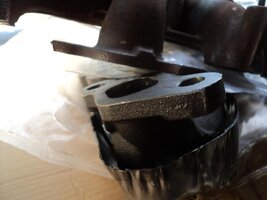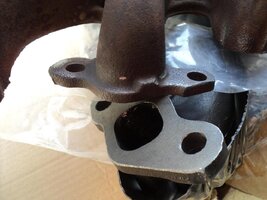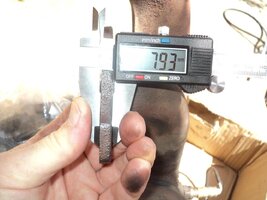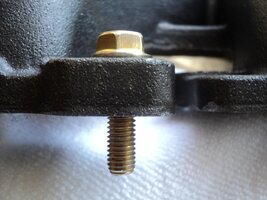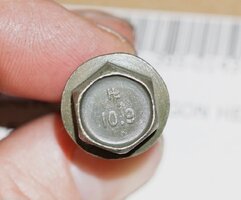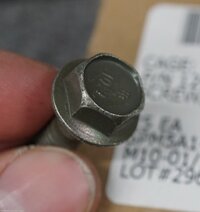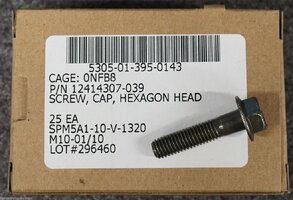Sorry to bump an old thread, but I just tackled this job largely using the info from this thread. Thought I would share some of my experience.
I started noticing exhaust noise several years ago. It started getting progressively worse. I could see several bolt heads snapped off on cylinders 5 and 6 with the heat shield on. I purchased a Dorman manifold kit off Amazon to be prepared for a crack. I don't want to tell you how long it sat in the garage (years). I knew this was going to be a tough job.
I decided last Wednesday was the day to start. I would have the whole Thanksgiving holiday weekend to tackle it (and run back and forth to the parts store). First problem I encountered, the upstream O2 sensor was seized. Couldn't get it out (I have a O2 sensor socket). That was the first casualty. Could have been worse, it had 80,000 miles on it. Lasted longer than the OEM.
The exhaust noise problem was apparent after getting the heat shield off. No bolt heads on the two bolts for cylinder 6. Top one was also missing on cylinder 5. I actually found a bolt head laying the garage about a year ago. No cracks in the manifold though.
I used Roadie's technique mentioned above for getting the bolts with heads out. You can feel the torque requirement increasing as you're backing them out. That's your signal to go back the other way for a few turns. I also recommend spraying some PB Blaster between the bolt head and the manifold as soon as there is space. Takes a while, but I got them all out without breaking any. The first bolt on cylinder 1 was loose.
After getting the manifold out, it was easy to see the problem. There was exhaust soot at the bottom of the port for cylinder 6. Cylinder 5 and Cylinder 1 look like they were still sealed.
Now on to the three broken bolts. I took Seanpooh's advice above and purchased the Irwin 5/16-8mm bolt extractor. He's right, it works great on the ones that had the heads broken off. They were easier to get out than the ones with heads. Buy it if you're attempting this job! However, there was one hole with no stud sticking out. Could I be so lucky that the bolt backed all the way out and is laying on a highway somewhere? Of course not. It was broken about 1/8" below the surface of the head. Could it be in a location that was easy to drill out? Of course not. It was the one closest to the firewall.
I was prepared with easy outs and bolt extractors. I even bought a cheap right angle drill to get back there. No luck. I snapped several easy outs. The bolt extractors wouldn't work. Next plan: helicoil. That failed too. The old bolt just would not drill out. I just kept screwing up the aluminum around the hole.
Here's how I finished it up. Feel free to criticize. I filled the bolt hole in with JB Weld. Then I gooped up the area around cylinder 6 with Permatex Hi Temp gasket maker on both sides of the gasket and put the whole thing back together. I'm hoping the gasket maker along with having one bolt on Cylinder 6 keeps it sealed for a while.
Haven't started it up yet. The gasket maker needs 24 hours to cure. I'm going to give it all of that - probably more since its about 30 degrees here. I'll let everyone know if it holds (and how long it holds).
This thing is not coming apart again. I used red threadlocker to put all the bolts in. I figured this can't be any worse than it was before I started (and might be better). If it starts making noise again, I'll live with it as long as I can before getting rid of the truck. It's almost 13 years old. It's done it's duty. Luckily, I don't drive it much. It's my wife's DD!!!

Anyone want an OEM manifold (truck is an '03) with a seized (but functional) O2 sensor in it?







